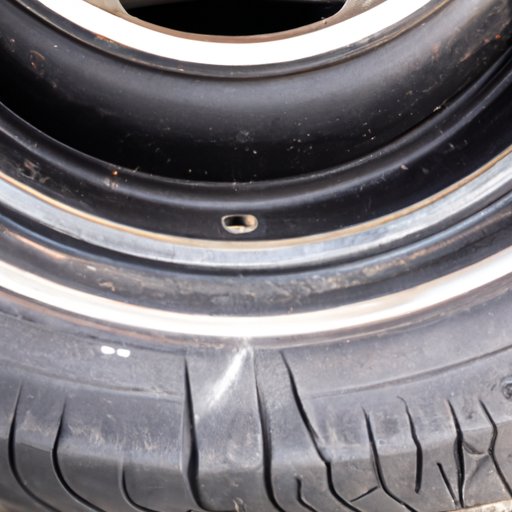
I. Introduction
Driving on a donut tire is a common occurrence among drivers. From nail punctures to blowouts, flat tires can happen at any time. But how long can you drive on a donut tire before it becomes a safety hazard? In this article, we explore the science, pros, cons, and limitations of driving on a donut tire. By the end of this article, you’ll be able to make informed decisions on whether it’s safe to drive on a donut tire and for how long.
II. The History of Spare Tires and How They Evolved to Donuts
Spare tires have been around since the early days of automobiles. At first, automakers equipped cars with a full-size spare tire that matched the other tires. However, this proved to be impractical, as spare tires were often too heavy and bulky to store in the car.
Over time, automakers started to equip cars with compact spare tires, known as “donuts.” Donut tires are smaller and thinner than regular tires, making it easier to store in the trunk. They also weigh less, making it easier to install and remove.
III. The Science Behind Donut Tires and Their Functional Limitations
Donut tires are designed for temporary use only. They are generally smaller and narrower than regular tires, with a shallower tread depth. The reduced size and weight make it easier to store in the car trunk, but also limits the tire’s capabilities on the road.
One of the most significant limitations of donut tires is their speed rating. Donut tires are often rated for a maximum speed of 50 mph. Driving at a higher speed may cause the tire to overheat and fail, which poses a significant risk to the driver and passengers.
IV. A Guide to Driving on Donuts: When It’s Safe and When It’s Not
Before driving on a donut tire, it’s important to consider several factors. The first thing to check is the tire pressure. Donut tires are designed to be inflated to a higher pressure than regular tires. Check the owner’s manual or the tire itself for the recommended pressure.
Next, assess the damage to the original tire that prompted the use of the donut tire. If the puncture is more significant than a nail hole, it’s best to replace the original tire entirely. Donut tires are not designed to replace a regular tire; they are temporary solutions only.
Finally, consider the length of time you need to drive on the donut tire and the driving conditions. If you need to drive only a few miles to get to the nearest repair shop, then it’s generally safe to drive on a donut tire. However, if you need to drive long distances or in harsh weather conditions, it’s best to replace the donut tire with a regular tire as soon as possible.
V. The Pros and Cons of Driving on a Donut Tire
Driving on a donut tire can have its advantages and disadvantages. One advantage is convenience. Donut tires are lightweight and easy to install, making it easy for owners to replace a flat tire themselves.
However, donut tires also have significant drawbacks. One significant drawback is their limited speed rating. Driving at higher speeds may cause the tire to fail, which poses a serious hazard to the driver and passengers. Moreover, donut tires have reduced handling capabilities, which may compromise the vehicle’s stability and handling in emergency situations.
VI. What to Do If You Have to Drive on a Donut Tire for an Extended Period
If you need to drive on a donut tire for an extended period, it’s essential to take extra precautions to ensure your safety on the road. The first thing to do is to limit your speed to 50 mph or less. Driving at higher speeds increases the risk of the tire overheating and failing.
It’s also essential to avoid driving on rough terrain or sharp turns. Donut tires have reduced handling capabilities, and driving on challenging terrain or sharp turns may cause the tire to fail, leading to a potential crash.
VII. Tips for Maintaining and Replacing Your Donut Tire
Donut tires require proper maintenance, even when not in use. Make sure to store the tire in a dry and cool place, away from direct sunlight. It’s also essential to check the tire pressure regularly, as donut tires are more prone to pressure loss than regular tires.
When it’s time to replace the donut tire, make sure to install a regular tire that matches the other tires’ specifications. Ensure that the new tire has the same size, load capacity, and speed rating as the other tires.
VIII. Conclusion
In conclusion, driving on a donut tire is safe for short periods and in suitable driving conditions. However, for extended periods or in harsh weather conditions, it’s best to replace the donut tire with a regular tire as soon as possible. Remember to check the tire pressure regularly and store the tire correctly to ensure its longevity. By following these tips, you’ll be able to make informed decisions on driving on a donut tire and ensure your safety on the road.




